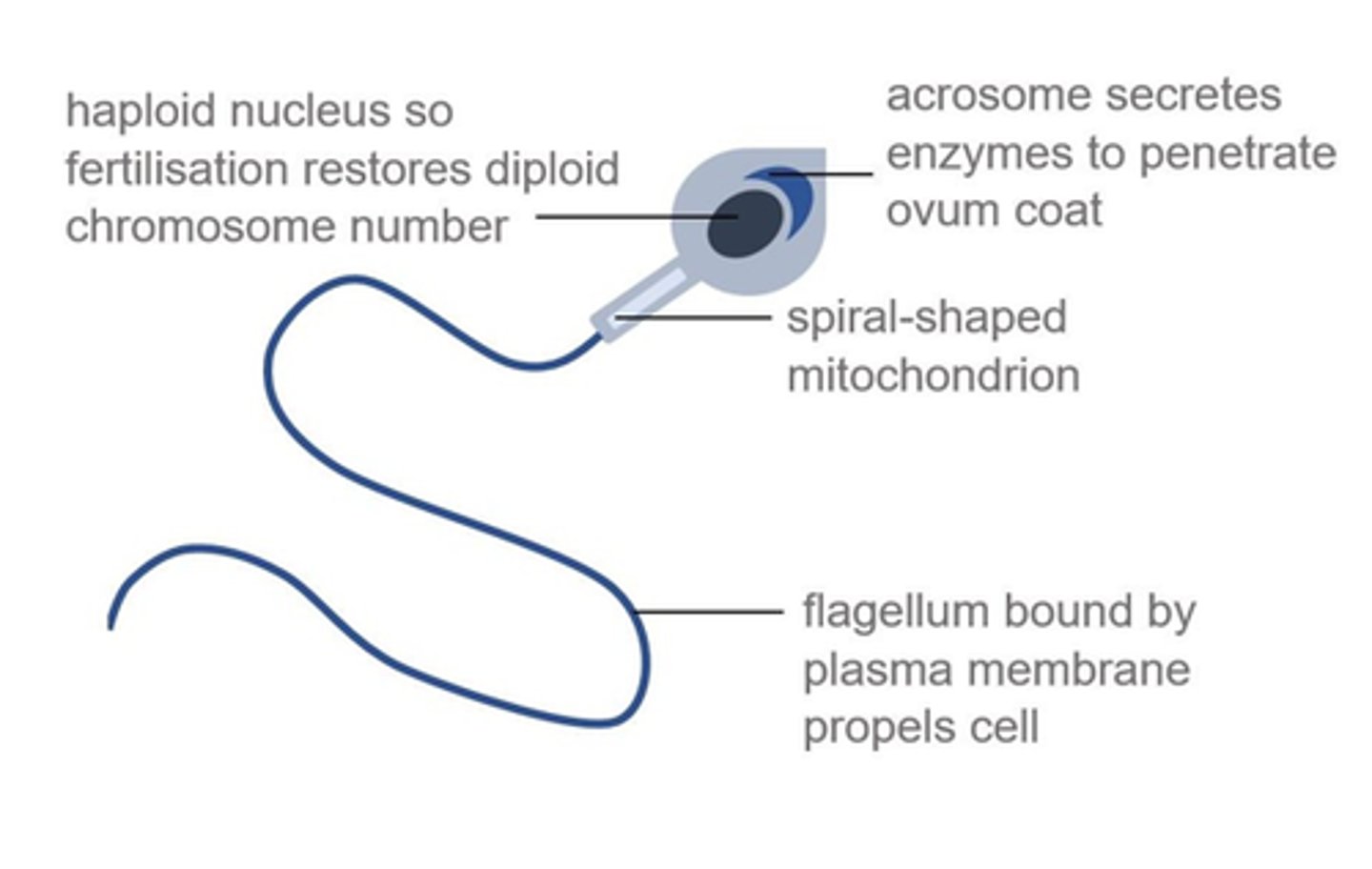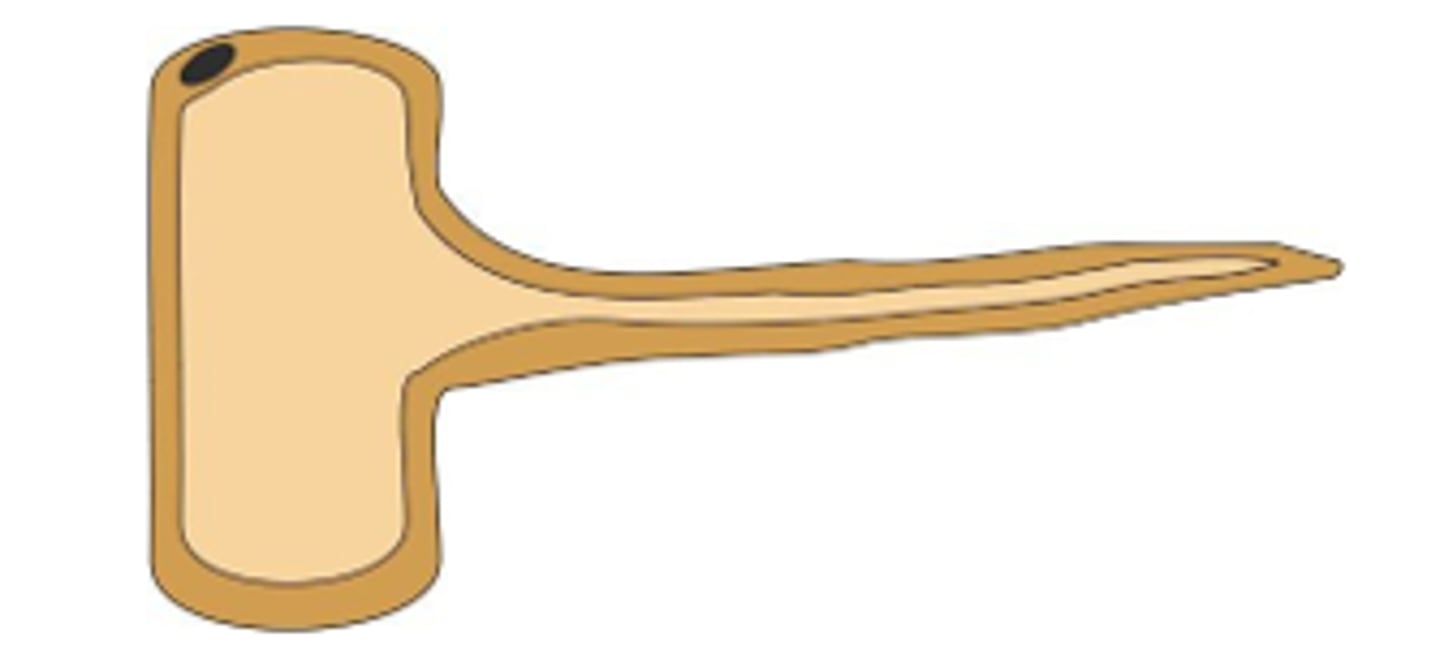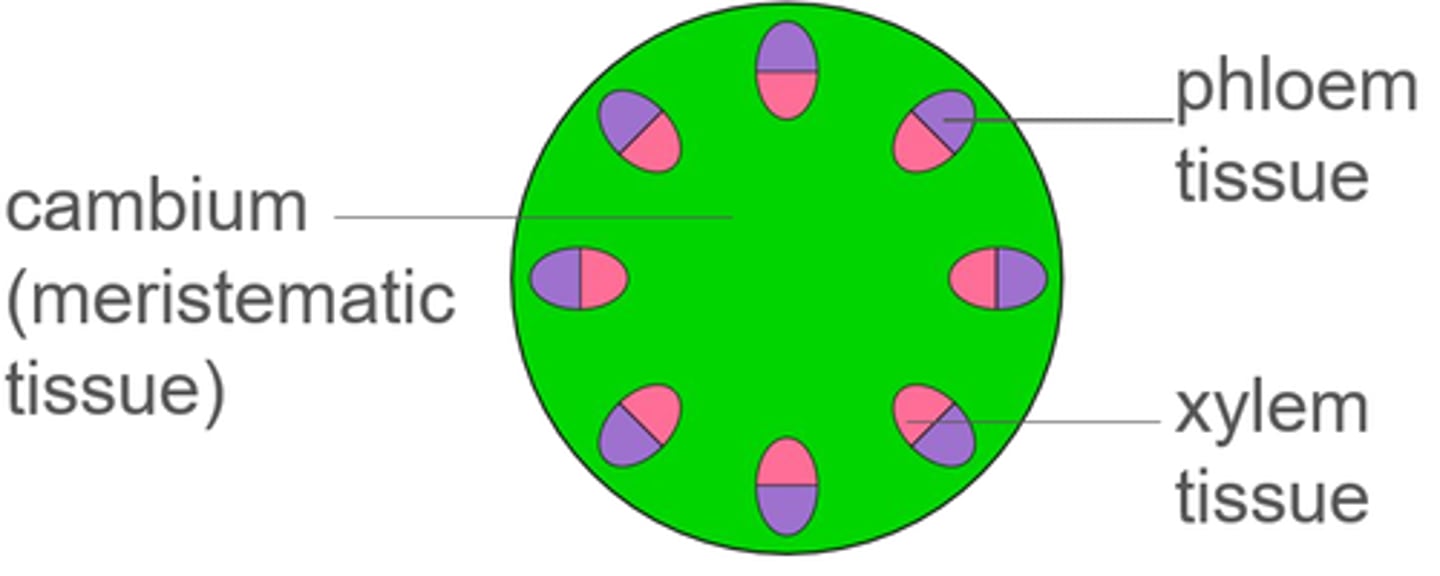Cell Division, Cell Diversity And Cellular Organisation: Foundations in Biology: Biology OCR A Level
1/36
There's no tags or description
Looks like no tags are added yet.
Name | Mastery | Learn | Test | Matching | Spaced |
|---|
No study sessions yet.
37 Terms
State what the cell cycle is and outline its stages.
Regulated cycle of division with intermediate growth periods.
1. interphase
2. mitosis or meiosis (nuclear division)
3. cytokinesis (cytoplasmic division)
Outline what happens during interphase.
G1: cell synthesises proteins for replication e.g. tubulin for spindle fibres & cell size doubles.
S: DNA replicates = chromosomes consist of 2 sister chromatids joined at a centromere.
G2: Organelles divide.
What is the purpose of mitosis?
Produces 2 genetically identical daughter cells for:
● growth
● cell replacement/ tissue repair
● asexual reproduction
Name the stages of mitosis.
1. Prophase
2. Metaphase
3. Anaphase
4. Telophase
Outline what happens during prophase.
1. Chromosomes condense, becoming visible. (X-shaped: 2 sister chromatids joined at centromere).
2. Centrioles move to opposite poles of cell (animal cells) & mitotic spindle fibres form.
3. Nuclear envelope & nucleolus break down = chromosomes free in cytoplasm.
Outline what happens during metaphase.
Sister chromatids line up at cell equator, attached to the mitotic spindle by their centromeres.
Outline what happens during anaphase.
Requires energy from ATP hydrolysis
1. Spindle fibres contract = centromeres divide.
2. Sister chromatids separate into 2 distinct chromosomes & are pulled to opposite poles of cell. (looks like ‘V’ shapes facing each other).
3. Spindle fibres break down.
Outline what happens during telophase.
1. Chromosomes decondense, becoming invisible again.
2. New nuclear envelopes form around each set of chromosomes = 2 new nuclei, each with 1 copy of each chromosome.
What happens during cytokinesis?
1. Cell membrane cleavage furrow forms.
2. Contractile division of cytoplasm.
How is the cell cycle regulated?
Checkpoints regulated by cell-signalling proteins ensure damaged cells do not progress to next stage of cycle.
Cyclin-dependent kinase enzymes phosphorylate proteins that initiate next phase of reactions.
Describe what happens at each key checkpoint in the cell cycle.
Between G1 & S, cell checks for DNA damage (e.g. via action of p53). After restriction point, cell enters cycle.
Between G2 & M, cell checks chromosome replication.
At metaphase checkpoint, cell checks that sister chromatids have attached to spindle correctly.
What is meiosis?
A form of cell division that produces four genetically different haploid cells (cells with half the number of chromosomes found in the parent cell) known as gametes.
What happens during meiosis Ⅰ?
1. Homologous chromosomes pair to form bivalents.
2. Crossing over (exchange of sections of genetic material) occurs at chiasmata.
3. Cell divides into two. Homologous chromosomes separate randomly. Each cell contains either maternal or paternal copy.
What are homologous chromosomes?
Pair of chromosomes with genes at the same locus.
1 maternal & 1 paternal.
Some alleles may be the same while others are different.
What happens during meiosis Ⅱ?
1. Independent segregation of sister chromatids.
2. Each cell divides again, producing 4 haploid cells.
How does meiosis produce genetic variation?
● Crossing over during meiosis Ⅰ.
● Independent assortment (random segregation) of homologous chromosomes & sister chromatids.
Result in new combinations of alleles.
How do cells become specialised?
Some genes are expressed while others are silenced due to cell differentiation mediated by transcription factors. Cells produce proteins that determine their structure & function.
What is a transcription factor?
A protein that controls the transcription of genes so that only certain parts of the DNA are expressed, e.g. in order to allow a cell to specialise.
How do transcription factors work?
1. Move from the cytoplasm into nucleus.
2. Bind to promoter region upstream of target gene.
3. Makes it easier or more difficult for RNA polymerase to bind to gene. This increases or decreases rate of transcription.
What is a stem cell?
Undifferentiated cells that can divide indefinitely and turn into other specific cell types.
Name and define the 4 types of stem cell.
● Totipotent: can develop into any cell type including the placenta and embryo.
● Pluripotent: can develop into any cell type excluding the placenta and embryo.
● Multipotent: can only develop into a few different types of cell.
● Unipotent: can only develop into once type of cell.
Suggest some uses of stem cells.
● Repair of damaged tissue e.g. cardiomyocytes after myocardial infarction.
● Drug testing on artificially grown tissues.
● Treating neurological diseases e.g. Alzheimer’s & Parkinson’s.
● Researching developmental biology e.g. formation of organs, embryos.
Describe the 2 groups of specialised cells in blood.
Erythrocytes (red blood cells): biconcave, no nucleus, lots of haemoglobin to carry oxygen.
Leucocytes (white blood cells): lymphocytes, eosinophils, neutrophils to engulf foreign material, monocytes.
How do the specialised cells in blood form?
Multipotent stem cells in the bone marrow differentiate into:
● Erythrocytes, which have a short lifespan & cannot undergo mitosis since they have no nucleus.
● Leucocytes, including neutrophils.
State the relationship between a system and specialised cells.
specialised cells → tissues that perform specific function → organs made of several tissue types → organ systems
Describe the structure of squamous and ciliated epithelia.
Simple squamous epithelium: single smooth layer of squamous cells (thin & flat with round nucleus) fixed in place by basement membrane.
Ciliated epithelium: made of ciliated epithelial cells (column-shaped with surface projections called cilia that move in a synchronised pattern).
Describe the specialised structure of a spermatozoon.
Specialised to fertilise an ovum during sexual reproduction in mammals.

Describe the structure and function of palisade cells and guard cells in plants.
palisade cells: Specialised to absorb light energy for photosynthesis, so contain many chloroplasts. Pack closely together.
guard cells: Form stoma. When turgid, stoma opens; when flaccid, stoma closes. Walls are thickened by spirals of cellulose.
Describe the structure and function of root hair cells.
Specialised to absorb water and low-concentration minerals from soil.
Hair-like projections increase surface area for osmosis / carrier proteins for active transport.
Many mitochondria produce ATP for active transport.

What are meristems?
Totipotent undifferentiated plant cells that can develop into various types of plant cell, including xylem vessels & phloem sieve tubes.
Classified as apical (at root & shoot tips), intercalary (stem) or lateral (in vascular areas).
Describe the structure of a vascular bundle.

Describe the structure of phloem tissue.
● Sieve tube elements: form a tube to transport sucrose in the dissolved form of sap.
● Companion cells: involved in ATP production for active loading of sucrose into sieve tubes.
● Plasmodesmata: gaps between cell walls where the cytoplasm links, allowing substances to flow.
Describe the structure of xylem tissue.
● Vessel elements: lignified secondary walls for mechanical strength & waterproofing; perforated end walls for rapid water flow.
● Tracheids: tapered ends for close packing; pits for lateral water movement; no cytoplasm or nucleus.
Describe the additional cell types in xylem tissue.
● xylem parenchyma: packing tissue with thin walls transmit turgidity
● sclereids
● sclerenchyma fibres: heavily lignified to withstand negative pressure
Describe the structure of cartilage.
● Avascular smooth elastic tissue made of chondrocytes, which produce extensive extracellular matrix (ECM).
● ECM mainly contains collagen & proteoglycan.
● 3 categories: hyaline, yellow elastic, white fibrous (depends on ratio of cells: ECM).
Name the 3 types of muscle in the body and where they are located.
Cardiac: exclusively found in heart.
Smooth: walls of blood vessels and intestines.
Skeletal: attached to incompressible skeleton by tendons.
Describe the gross structure of skeletal muscle.
Muscle cells are fused together to form bundles of parallel muscle fibres (myofibrils).
Arrangement ensures there is no point of weakness between cells.
Each bundle is surrounded by endomysium: loose connective tissue with many capillaries.